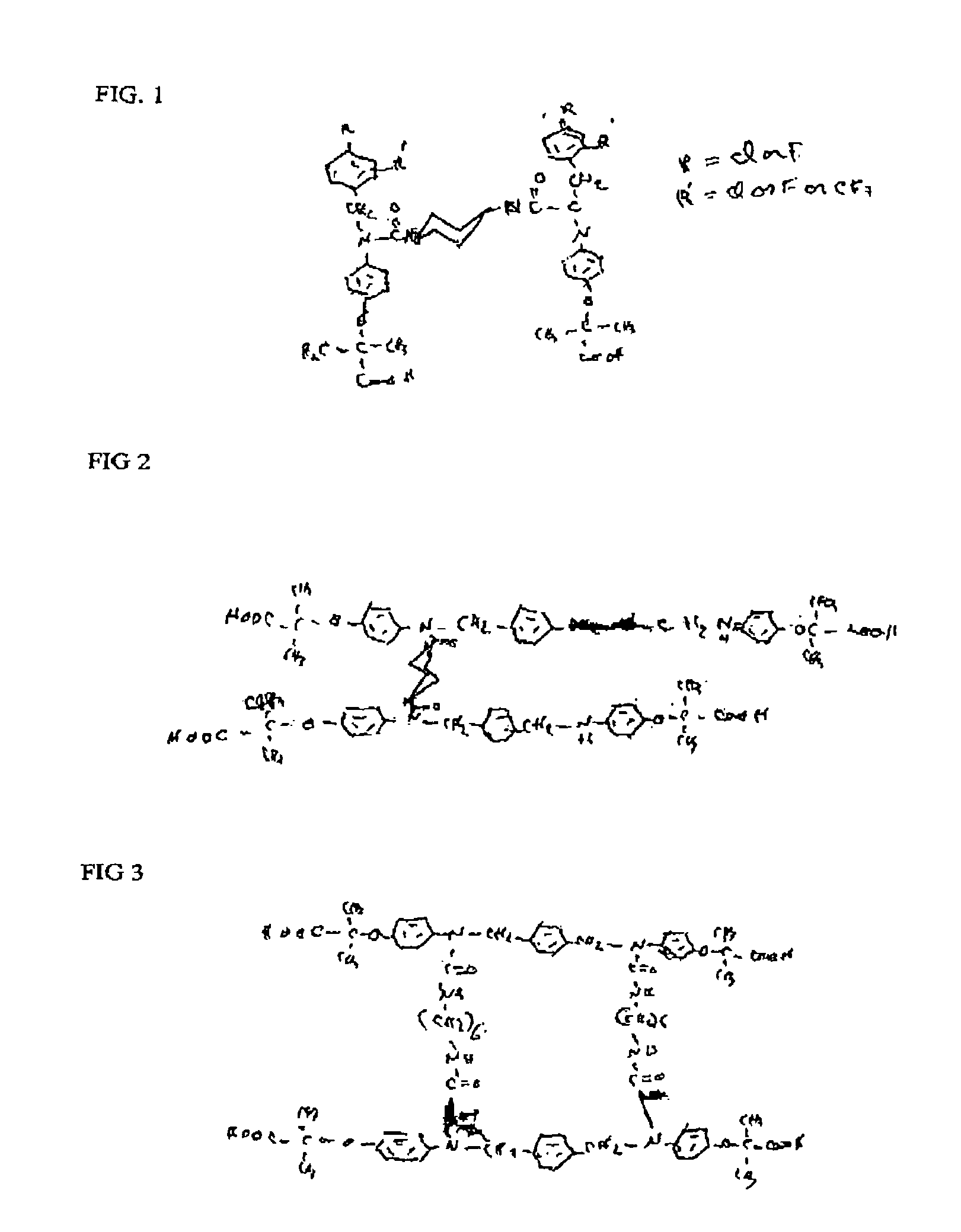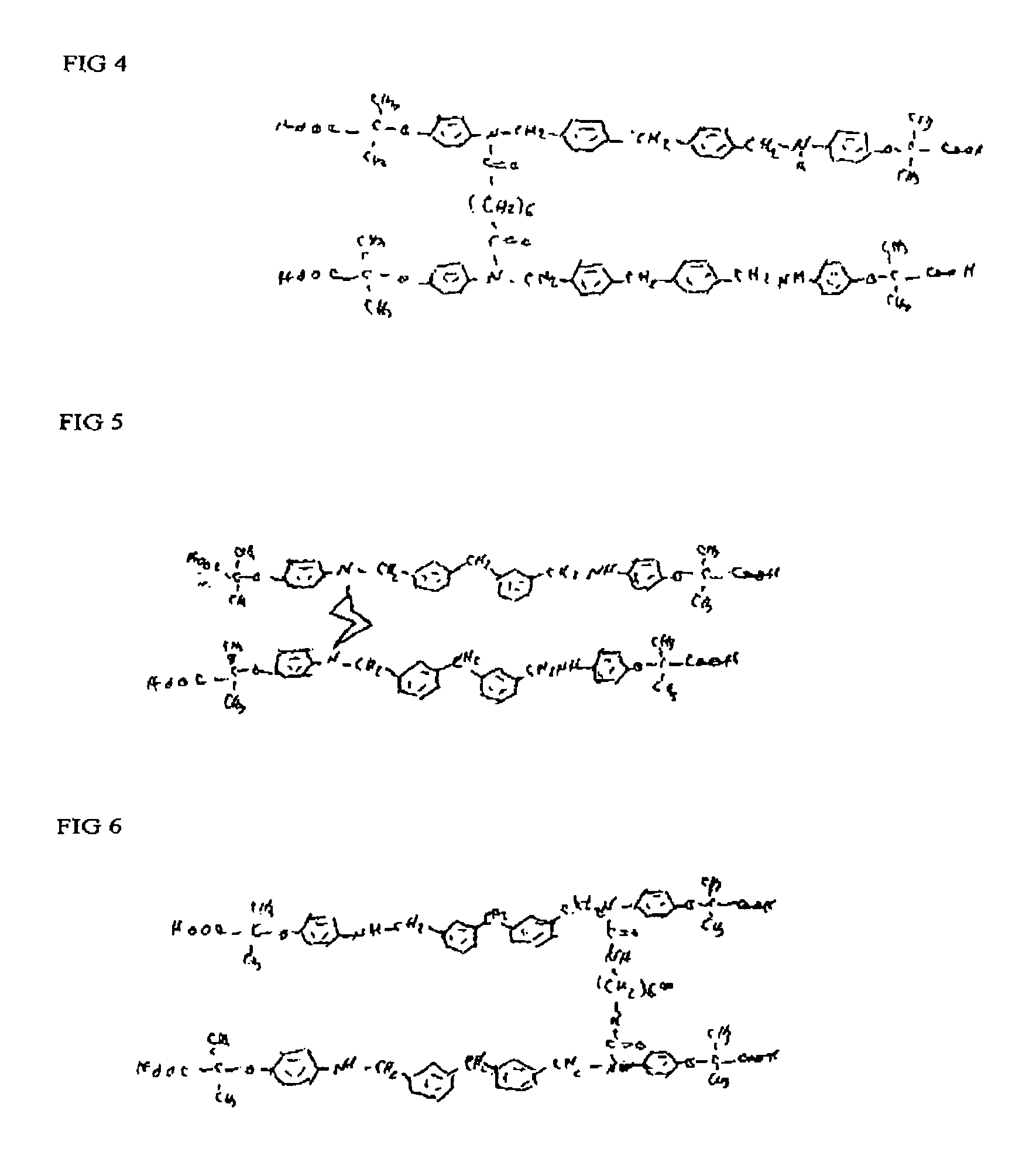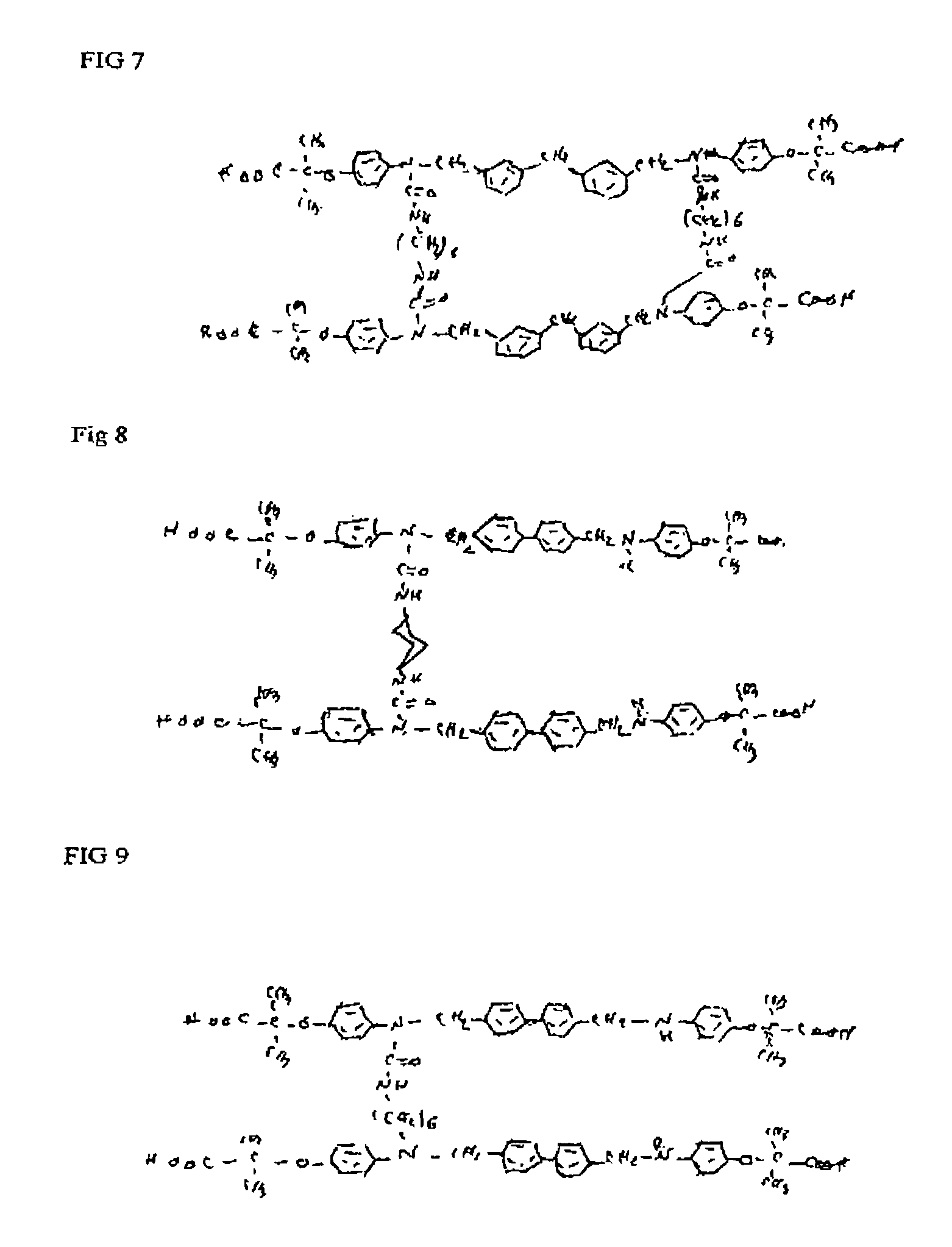Phenoxyisobutyric acid compounds and methods for synthesis
a technology of phenoxyisobutyric acid and phenoxyisobutyric acid, which is applied in the field of phenoxyisobutyric acid compounds and methods, and can solve the problems of severe structural and functional changes in protein/protein and protein/cell interaction in the vascular wall, severe consequences on affected organs, and inability to fully understand the mechanisms of hyperglycemia-induced tissue damage in diabetes
- Summary
- Abstract
- Description
- Claims
- Application Information
AI Technical Summary
Problems solved by technology
Method used
Image
Examples
example 1
4-benzylamino-phenoxyisobutyric acid
[0057]A mixture of 1.95 g (0.01 mole) of 4-aminophenoxyisobutyric acid, 25 ml of ethanol, 1.76 g (0.02 mole) of potassium carbonate and 1.2 ml (0.01 mole) of benzyl bromide was stirred and refluxed for 24 hours. Most of the ethanol was evaporated. The residue was dissolved in water, charcoaled, filtered, and acidified water acetic acid to give an oily material which by cooling turned into a solid with a melting point of 194-196° C. The structure (shown below as Formula EX1) was confirmed by NMR spectroscopy.
[0058]
example 2
4-(4-chloro)benzylamino-phenoxyisobutyric acid
[0059]A mixture of 1.28 ml (10 mole) of 4-chlorobenzylchloride, 1.95 g (10 mole) 4-aminophenoxyisobutyric acid, 2.76 g (20 mole) potassium carbonate and 20 ml ethanol was refluxed and stirred for 24 hours. The mixture was treated as in Example 1 giving a solid with a melting point of 164-166° C. The structure (shown below as Formula EX2) was confirmed by NMR spectroscopy.
[0060]
[0061]Congeners similar to Formula EX2 wherein the chlorine is in the 2 or 4 position can also be prepared by the above procedure by appropriate selection of the starting benzylhalide. Compounds similar to the above described chloride congenes wherein the chlorine is replaced by another halogen such as fluorine or bromine, or a hydrocarbon such as a phenyl, phenoxy or a straight, branched or cyclic alkyl or alkyoxy of 1-6 carbon can also be prepared according to the aforementioned procedure by appropriate selection of the starting substituted benzylhalide. Such a p...
example 3
4-(3,4 dichloro)benzylamino-phenoxyisobutyric acid
[0062]A mixture of 1.4 ml (10 mole) of 3,4-dichlorobenzylchloride, 1.95 g (10 mole) 4-aminophenoxyisobutyric acid, 2.75 g (20 mole) potassium carbonate and 25 ml ethanol was refluxed and stirred for 24 hours. The mixture was treated as in Example 1 giving a solid with a melting point of 144-146° C. The structure (shown below as Formula EX3) was confirmed by NMR spectroscopy. The yield was approximately 84%
[0063]
[0064]Congeners similar to Formula EX3 wherein the chlorine are in the 2,3; 2,5; 2,6 and 3,5 position can also be prepared by the above procedure by appropriate selection of the starting benzylhalide. Compounds similar to the above described chlorides wherein the chlorine is replaced by another halogen such as fluorine or bromine, or a hydrocarbon such as a phenyl, phenoxy or a straight, branched or cyclic alkyl or alkyoxy of 1-6 carbon can also be prepared according to the aforementioned procedure by appropriate selection of ...
PUM
| Property | Measurement | Unit |
|---|---|---|
| melting point | aaaaa | aaaaa |
| melting point | aaaaa | aaaaa |
| melting point | aaaaa | aaaaa |
Abstract
Description
Claims
Application Information
 Login to View More
Login to View More - R&D
- Intellectual Property
- Life Sciences
- Materials
- Tech Scout
- Unparalleled Data Quality
- Higher Quality Content
- 60% Fewer Hallucinations
Browse by: Latest US Patents, China's latest patents, Technical Efficacy Thesaurus, Application Domain, Technology Topic, Popular Technical Reports.
© 2025 PatSnap. All rights reserved.Legal|Privacy policy|Modern Slavery Act Transparency Statement|Sitemap|About US| Contact US: help@patsnap.com



